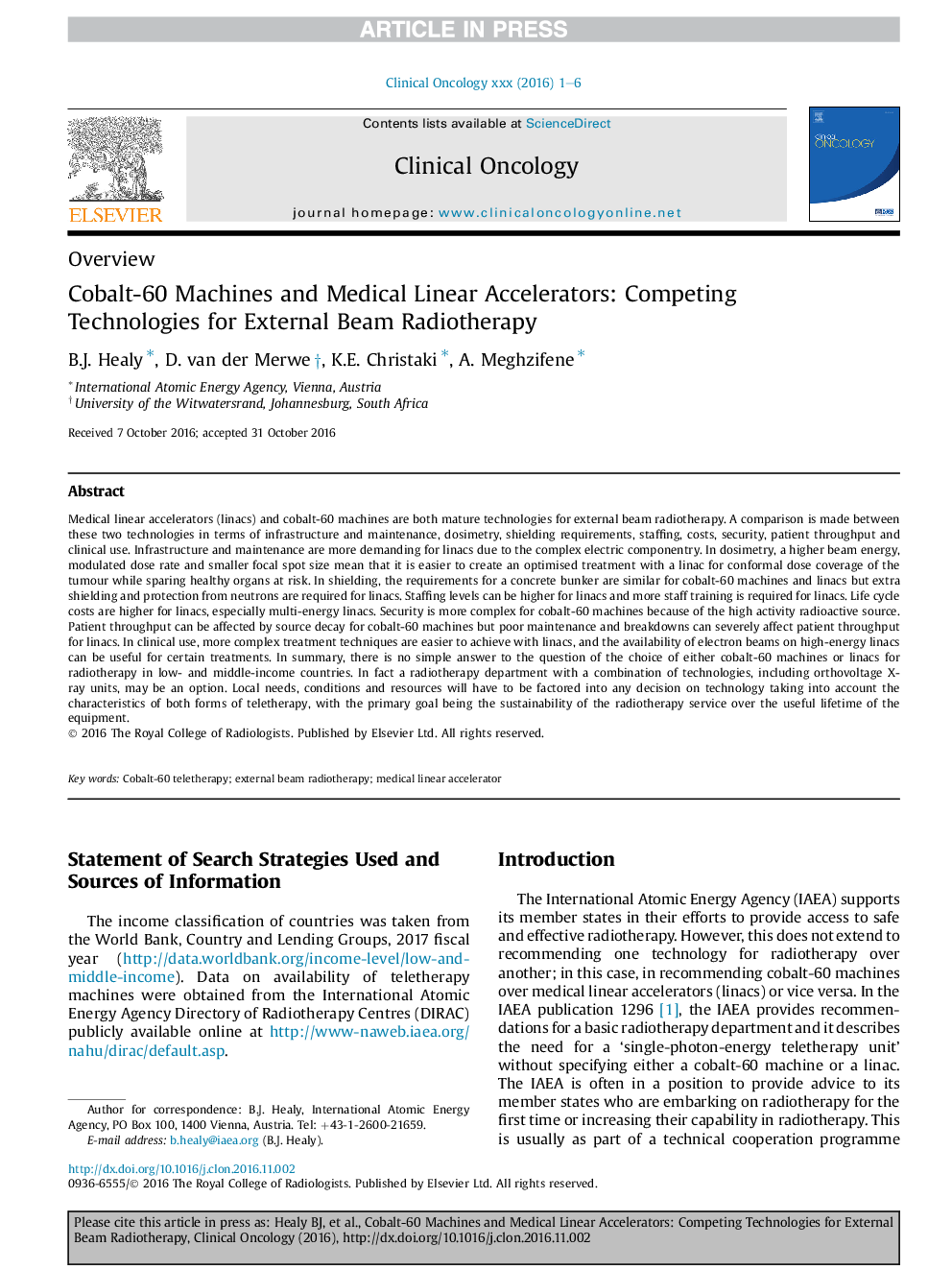| کد مقاله | کد نشریه | سال انتشار | مقاله انگلیسی | نسخه تمام متن |
|---|---|---|---|---|
| 5698192 | 1410347 | 2017 | 6 صفحه PDF | دانلود رایگان |
عنوان انگلیسی مقاله ISI
Cobalt-60 Machines and Medical Linear Accelerators: Competing Technologies for External Beam Radiotherapy
ترجمه فارسی عنوان
ماشین آلات کبالت 60 و شتاب دهنده های خطی پزشکی: فن آوری های رقابتی برای پرتودرمانی بیرونی
دانلود مقاله + سفارش ترجمه
دانلود مقاله ISI انگلیسی
رایگان برای ایرانیان
کلمات کلیدی
تلتراشی کوبالت 60، اشعه ماوراء بنفش پرتو خارجی، شتاب دهنده خطی پزشکی،
موضوعات مرتبط
علوم پزشکی و سلامت
پزشکی و دندانپزشکی
تومور شناسی
چکیده انگلیسی
Medical linear accelerators (linacs) and cobalt-60 machines are both mature technologies for external beam radiotherapy. A comparison is made between these two technologies in terms of infrastructure and maintenance, dosimetry, shielding requirements, staffing, costs, security, patient throughput and clinical use. Infrastructure and maintenance are more demanding for linacs due to the complex electric componentry. In dosimetry, a higher beam energy, modulated dose rate and smaller focal spot size mean that it is easier to create an optimised treatment with a linac for conformal dose coverage of the tumour while sparing healthy organs at risk. In shielding, the requirements for a concrete bunker are similar for cobalt-60 machines and linacs but extra shielding and protection from neutrons are required for linacs. Staffing levels can be higher for linacs and more staff training is required for linacs. Life cycle costs are higher for linacs, especially multi-energy linacs. Security is more complex for cobalt-60 machines because of the high activity radioactive source. Patient throughput can be affected by source decay for cobalt-60 machines but poor maintenance and breakdowns can severely affect patient throughput for linacs. In clinical use, more complex treatment techniques are easier to achieve with linacs, and the availability of electron beams on high-energy linacs can be useful for certain treatments. In summary, there is no simple answer to the question of the choice of either cobalt-60 machines or linacs for radiotherapy in low- and middle-income countries. In fact a radiotherapy department with a combination of technologies, including orthovoltage X-ray units, may be an option. Local needs, conditions and resources will have to be factored into any decision on technology taking into account the characteristics of both forms of teletherapy, with the primary goal being the sustainability of the radiotherapy service over the useful lifetime of the equipment.
ناشر
Database: Elsevier - ScienceDirect (ساینس دایرکت)
Journal: Clinical Oncology - Volume 29, Issue 2, February 2017, Pages 110-115
Journal: Clinical Oncology - Volume 29, Issue 2, February 2017, Pages 110-115
نویسندگان
B.J. Healy, D. van der Merwe, K.E. Christaki, A. Meghzifene,
